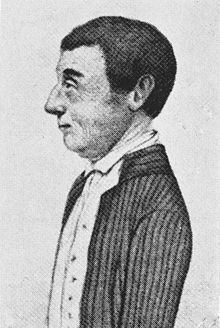Nationality English Name John Abbot | Role Entomologist | |
 | ||
Books The Abbey Psalter: The Book of Psalms Used by the Trappist Monks of Genesee Abbey | ||
John Abbot was an American entomologist and ornithologist. He was born on 31 May or 1 June 1751 in London and died on December 1840 or January 1841 in Bulloch County in Georgia.
Contents
Life
Little is known of his life. He was the eldest son of James Abbot and Ann Clousinger. His father was training him to become a lawyer, but Dru Drury encouraged his interest in entomology and art and he studied drawing and engraving with the engraver Jacob Bonneau (1741—1786). Dru Drury and a group of naturalists from the Royal Society, recognized his talent as an illustrator, and encouraged him to go to Virginia to study and collect natural history specimens. He remained in Virginia from 1773 to 1775, and then settled in Georgia in what is now known as Screven County. He served in the Revolutionary War in the Third Georgia Continental Battalion as a private. As a veteran after the war he received several hundred acres of land upon which he established a plantation, and became the local school master.
He produced thousands of insect illustrations, as well as several sets of bird illustrations. The majority are preserved in the Natural History Museum, London, the British Museum and Houghton Library at Harvard University. Other repositories of his drawings include Johns Hopkins University, University of South Carolina, Emory University, and the Alexander Turnbull Library. Some have been dispersed following various auctions that included his drawings. The bird and insect specimens that he collected were sent to Britain and Europe, but a certain number were lost at sea, which discouraged him. He nonetheless continued to collect and paint specimens until at least 1835.
The only publication to bear his name was The Natural History of the Rarer Lepidopterous Insects of Georgia, whose primary author was James Edward Smith. It included 104 plates that were reproduced from original drawings by John Abbot, which are now preserved at Johns Hopkins University. Abbot also provided most of the observations published in the book. First appearing in 1797, new copies of the book were issued for thirty years.
From 1829 to 1837, renowned French entomologist Jean Baptiste Alphonse Dechauffour de Boisduval (1799–1879) and wealthy American naturalist John Eatton Le Conte (1784–1860) published installments of Histoire Générale et Iconographie des Lépidoptères et des Chenilles de l’Amérique Septentrionale. This publication included 78 hand-colored engraved plates, most created from original drawings by John Abbot. The majority of these original drawings are now deposited at the University of South Carolina. A collection of 130 watercolors of birds, are held by the Smithsonian Institution.
